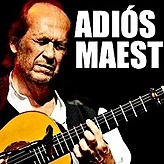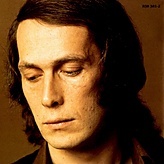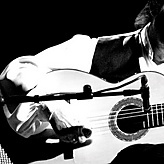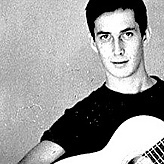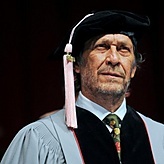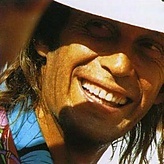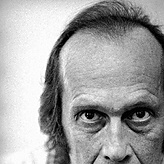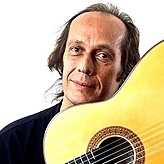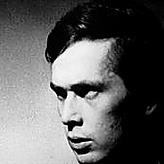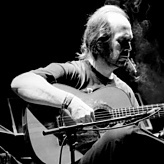
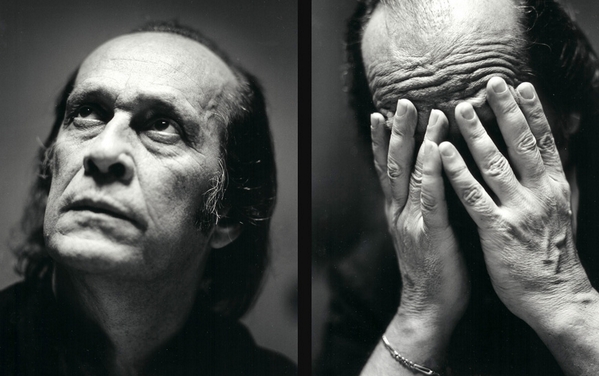
Francisco Sánchez Gomes, conocido mundialmente como Paco de Lucia nació el 21 de Diciembre de 1947 en Cádiz, España.
El guitarrista flamenco toma su nombre artístico de la conjunción de Paco (como le decían sus amigos) y de Lucía (el nombre de su madre).
Desde pequeño, Paco de Lucia estuvo muy ligado a la música, ya que provenía de una familia de artistas. Ejemplo de ello son sus hermanos Pepe de Lucía (cantaor profesional) y Ramón de Algeciras (guitarrista).
En 1965 lanza su álbum debut bajo el título de “Dos Guitarras Flamencas”, junto a Ricardo Modrego. Ese mismo año aparece una segunda producción, también al lado de Ricardo, titulada “12 Canciones de García Lorca para Guitarra”.
Dos años más tarde, regresa a los estudios de grabación, esa vez al lado de su hermano Ramón de Algeciras, con quien produce el disco “Dos Guitarras Flamencas en América Latina” (1967). Poco después a este trabajo aparece un nuevo LP titulado “La Fabulosa Guitarra de Paco de Lucía”.
A finales de la década de los 60, Paco de Lucia conoce a “Camarón de la Isla”, a quien se une para crear una serie de proyectos. Ambos son denominados por los críticos como los precursores de las fusiones del flamenco con géneros tales como el rock y el jazz.
En 1969 salen al mercado dos discos simultáneos. Por un lado, el LP “Hispanoamérica” y por el otro, el álbum “Fantasía Flamenca de Paco de Lucía”.
Ya en los años 70, edita el álbum “Recital de Guitarra” (1971), y posteriormente sale a al venta “El Duende Flamenco de Paco de Lucía” (1972).
Un año después, Paco de Lucía edita el álbum “Fuente y caudal”, y es a partir de este momento, cuando la popularidad de Paco de Lucía comienza a traspasar las fronteras de su país.
En 1975, aparece el disco grabado durante un concierto “En Vivo Desde el Teatro Real”; y en 1976 presenta el material titulado “Almoraima”.
Un año más tarde, mientras paseaba por Latinoamérica, presentando su música, llega a Perú, donde conoce al músico afro peruano “Caitro Soto”, quien le presenta y enseña a tocar al instrumento y símbolo nacional (“El cajón peruano”). De esta manera Paco de Lucía queda impresionado con el sonido de aquel instrumento, y decide incluirlo en sus próximas grabaciones, ya que el sonido particular del cajón quedaría muy bien fusionado con las tonadas del flamenco.
En 1978 sale al mercado el disco "Paco de Lucía Interpreta a Manuel de Falla".
Iniciando la década de los 80, precisamente en 1981 Paco de Lucía presenta 4 discos. El primero titulado “Castro Marín”. El segundo, grabado junto a los otras dos grandes guitarras mundiales (Al Di Meola y John McLaughlin), titulado “Friday Night in San Francisco”. El tercero bajo el título de “Sólo Quiero Caminar”, y por último el disco recopilatorio titulado “Entre Dos Aguas”.
Dos años más tarde vuelve a juntarse con Al Di Meola y John McLaughlin para producir un nuevo álbum, bajo el título de “Passion, Grace and Fire” (1983).
En 1984 aparece un LP en vivo titulado “Live... One Summer Night”, y finaliza la década con el álbum “Siroco”(1987).
Ya en 1990 graba el disco “Zyryab” y un año después produce el grandioso disco “Concierto de Aranjuez” de Joaquín Rodrigo.
Pasados dos años, edita el LP en vivo “Live in América” (1993), grabado durante una presentación suya en los Estados Unidos.
En 1996, se une nuevamente a Di Meola y McLaughlin para realizar su tercera producción en conjunto. Este disco se tituló “The Guitar Trio”.
Dos años más tarde, nace el disco “Luzia” (1998) y por último ya en el 2004 lanza el álbum “Cositas Buenas”.
Influencias y características de su toque
Paco de Lucía ha recibido principalmente la influencia de dos escuelas: la del Niño Ricardo, considerado como una de las figuras más destacadas de la guitarra flamenca y el precursor más directo de Paco de Lucía, y la de Sabicas, a quien se considera como el máximo influyente en el desarrollo y perfeccionamiento de la guitarra flamenca como instrumento de concierto (antes, la guitarra era un instrumento de acompañamiento al cantaor).
La contribución de Sabicas en el flamenco es doble: Por un lado, amplía la técnica de la guitarra flamenca (inventó, por ejemplo, la alzapuá en una cuerda y el rasgueo de tres dedos), y por otro destaca como un compositor de categoría, ya que sus obras se caracterizan no por unirfalsetas —frases líricas que toca el guitarrista cuando el cantaor deja de cantar—, sino por crear una estructura melódica, rítmica y armónica perfectamente coherente de principio a fin, como en cualquier obra clásica, cosa que en el flamenco nunca se había hecho a excepción de algunas figuras coetáneas Esteban de San Lucar, por ejemplo, en magníficas creaciones como "Mantilla de feria" o "Panaderos flamencos").
Pocas cosas cabe objetar al toque de Sabicas, que gozaba de una extraordinaria técnica con una amplia sonoridad —muchas veces tocaba en los escenarios sin micrófono— debida a su fuerte pulsación y a la enorme calidad de sus composiciones.
L
a mejor contribución de Paco de Lucía al flamenco es la de haber conseguido popularizarlo e internacionalizarlo, aunque ello haya supuesto muchas veces una merma de la pureza en el toque. Está considerado como un espléndido intérprete por su virtuosismoy su personalísimo estilo, que se puede definir como vigoroso y rítmico. Este estilo se manifiesta en la calidad de numerosas obras del artista. Entre ellas, "Entre dos Aguas" (rumba), "La Barrosa" (alegrías), "Barrio la Viña", "Homenaje al Niño Ricardo" (soleá), "Almoraima" (bulerías), "Guajiras de Lucía" y "Río Ancho" (rumba).
Es meritorio además el esfuerzo que ha realizado este artista por dar a conocer el flamenco al público de fuera de España y el haberse atrevido a "darle otro aire" mezclándolo con otros estilos, que, aunque de estructuras melódicas y rítmicas diferentes, pueden congeniar bien con él. Paco de Lucía ha abierto el camino para este tipo de experimentaciones y fusiones del flamenco con diversas músicas, lo cual es sin duda encomiable.
A todo esto, no hay que olvidar que su padre Antonio recibió clases de guitarra de la mano del primo hermano de Melchor de mMarchena: Manuel Fernández "Titi de Marchena", un guitarrista que llegó a Algeciras en la década de los años 20, creó afición y escuela, y tal vez influyera en los principios de Paco.
Otro aporte de Paco de Lucía al arte Flamenco contemporáneo ha sido la inclusión del cajón. Este instrumento de la música afroperuana es conocido por Paco de Lucía en Perúa fines de los años 70, de manos de Carlos "Caitro Soto de la Molina", cajonero y compositor peruano.
Paco de Lucía intuye y entiende, al conocer este instrumento peruano, que puede ser una solución a la permanente necesidad de percusión que requiere el flamenco, y lo añade, en complicidad con Rubem Danas a los elementos percusivos utilizados en su sexteto de entonces, convirtiéndose el cajón desde ese momento y con el paso del tiempo en un instrumento imprescindible del arte flamenco contemporáneo y,luego, de otras corrientes musicales internacionales.
--------------------------------------------------
Francisco Sanchez Gomez, known worldwide as Paco de Lucia was born on December 21, 1947 in Cadiz, Spain.
.
The Flamenco guitarist takes his stage name from the combination of Paco (as his friends called him) and Lucia (the name of your mother).
.From Small, Paco de Lucia was closely linked to the music, and who came from a family of artists. Examples are his brothers Pepe de Lucía (professional singer) and Ramón de Algeciras (guitarist).
.In 1965 releases his debut album under the title "Two Flamenco Guitars" with Ricardo Modrego. That same year a second production also appears next to Ricardo, entitled "12 songs of García Lorca Guitar".
.Two Years later, she returns to the recording studio, this time alongside his brother Ramon de Algeciras, who produced the album "Two Flamenco Guitars in Latin America" ??(1967). Shortly after this work appears a new LP titled "The Fabulous Guitar of Paco de Lucia".
.A Late 60s, Paco de Lucia knows "Camarón", whom he joined to create a series of projects. Both are referred to by critics as the precursors of mergers between flamenco and genres such as rock and jazz.
.In 1969 they coming to market two simultaneous disk. On the one hand, the LP "Latin America" ??and on the other, the album "Fantasia Flamenca Paco de Lucia".
.Ya In the 70s, edit the album "Guitar Recital" (1971), and then goes on to sell "El Duende Flamenco Paco de Lucia" (1972).
.A Year later, Paco de Lucia edits the album "Fuente y caudal" and it is from this moment, when the popularity of Paco de Lucia begins to cross the borders of their country.
.In 1975, the recorded disc appears during a concert "Live From the Royal Theatre"; and in 1976 presents the material entitled "Almoraima".
.A Year later, while walking through Latin America, presenting his music comes to Peru, where he met the Afro-Peruvian musician "Caitro Soto", who presented and taught to play the instrument ("Peruvian drawer") national symbol. Thus Paco de Lucia is impressed with the sound of that instrument, and decides to include in its upcoming recordings, as the particular sound of the drawer would be well fused with flamenco tunes.
.In 1978 he hits the market the album "Paco de Lucia plays Manuel de Falla".
.Iniciando The 80s, precisely in 1981 Paco de Lucia has 4 albums. The first entitled "Castro Marin". The second, recorded with the other two major global guitars (Al Di Meola and John McLaughlin), entitled "Friday Night in San Francisco". The third party under the title "Just Walking", and finally the compilation album "Entre Dos Aguas".
.Two Years later rejoins Al Di Meola and John McLaughlin to produce a new album under the title of "Passion, Grace and Fire" (1983).
.In 1984 he featured a live LP titled "Live ... One Summer Night", and ends the decade with the album "Siroco" (1987).
.Ya In 1990 recorded "Zyryab" and a year later produced the great disc "Concierto de Aranjuez" by Joaquin Rodrigo.
.Pasados ??Two years editing the live LP "Live in America" ??(1993), recorded during his presentation in the United States.
.In 1996, he rejoins McLaughlin and Di Meola for his third production together. This album was titled "The Guitar Trio".
.Two Years later, comes the album "Luzia" (1998) and finally and in 2004 launched the album "Good Little things".
. And features of your touch
Paco de Lucía has mainly been influenced by two schools: the Niño Ricardo, considered one of the leading figures of flamenco guitar and the most direct Paco de Lucia precursor, and Sabicas, who is regarded as the most influential in the development and improvement of the flamenco guitar as a concert instrument (before the guitar was an instrument accompanying the singer).
.The Contribution Sabicas in flamenco is twofold: On the one hand, extends the flamenco guitar technique (invented, for example, alzapúa on a string and strum three fingers), and the other out as a composer category because their works are characterized not by uniting lyrical flourishes -frases playing the guitar when the singer stops sing- but to create a perfectly coherent melodic, rhythmic and harmonic structure from beginning to end, as in any classic, thing in flamenco he had never done except for some contemporaneous figures (Esteban de Sanlúcar, for example, magnificent creations as "Mantilla fair" or "Flemish Bakers").
It be objected to touch things Sabicas, who enjoyed a remarkable technique with a wide sound-many times playing on stage without microphone due to its strong pulse and the sheer quality of his compositions.
.Barriles Jerez, one of them signed by Paco de Lucia.
The best contribution of Paco de Lucia flamenco is to have managed to popularize and internationalize, although this assumption is often a loss of purity in touch. It is considered a splendid interpreter for his virtuosity and his personal style, which can be defined as vigorous and rhythmic. This style is reflected in the quality of many works of the artist. Including "Entre dos aguas" (rumba), "La Barrosa" (joy), "Barrio Vine," "Tribute to Niño Ricardo" (soleá), "Almoraima" (bulerías), "Guajiras Lucia" and " Wide River "(rumba).
.It Also the commendable efforts made by the artist to make known to the public flamenco outside Spain and the daring to "give it another" mixed with other styles, which, although of different melodic and rhythmic structures, can get along along with. Paco de Lucia has opened the way for such experiments and flamenco fusions with diverse music, which is certainly commendable.
.A All this, we must not forget that his father Antonio was taught guitar hand cousin of Melchor de Marchena: Manuel Fernández "Titi de Marchena," a guitarist who arrived in Algeciras in the early 20s, He created hobby and school, and perhaps influenced the principles of Paco.
.Another Contribution of the Flamenco Paco de Lucia contemporary art has been the inclusion of the drawer. This instrument of Afro-Peruvian music is known for Paco de Lucia in Peru in the late 70s, at the hands of Carlos "Caitro" Soto de la Colina, drawer and Peruvian composer.
Lucia .Paco senses and understand, to know this Peruvian instrument, which can be a solution to the continuing need for requiring flamenco percussion, and adds, in complicity with Rubem Dantas, the percussive elements used in his sextet then , becoming the drawer since then and over time an essential instrument of contemporary flamenco and then, other international musical trends.

